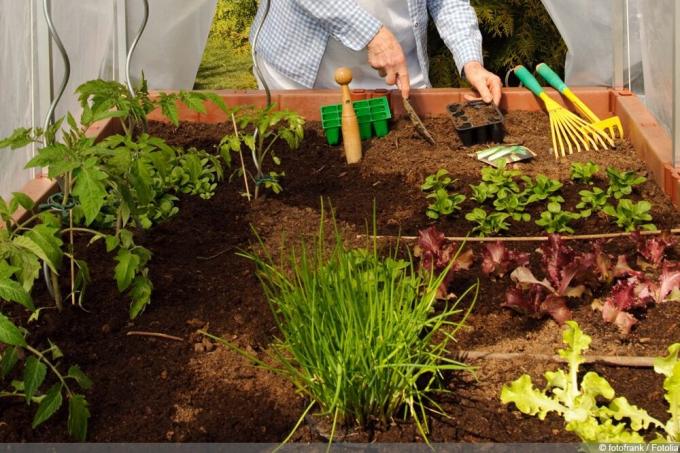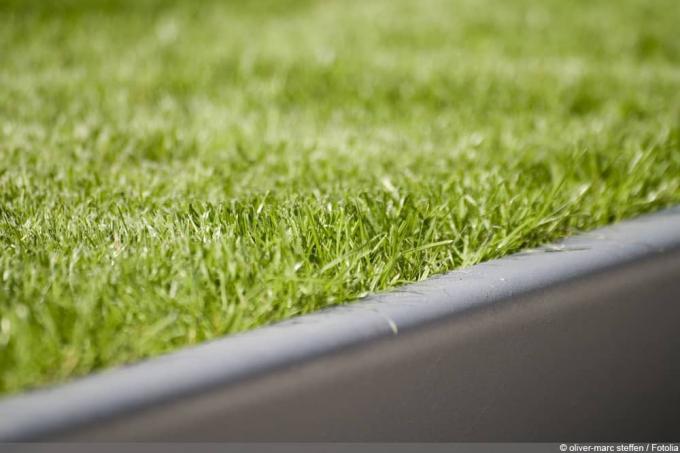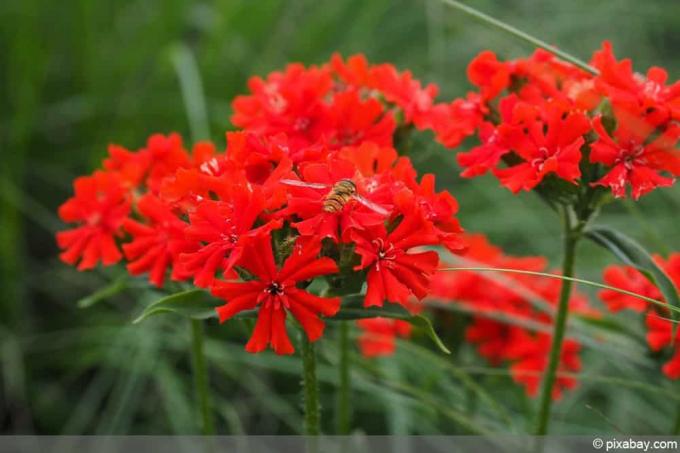

Table of contents
- Benefits - list with explanations
- Disadvantages - overview with explanations
In the creative garden design, a well thought-out bed border deserves just as much attention as the arrangement of the plants. After all, the floral protagonists in the bed only really come into their own with the right setting. In the wide range of suitable materials, plastic has long been one of the most popular options. This guide uses the eminent advantages and disadvantages to highlight whether the decision to use a plastic bed edging is still up-to-date.
Benefits - list with explanations
House gardeners with limited time capacity for garden maintenance keep a targeted lookout for a rational bed border. It should be practical and time-saving as well as inexpensive to purchase. When it comes to modern garden design, criteria such as optical clarity and prosaic styling come into focus when selecting a bed edging. With numerous advantages, plastic has long been considered the ultimate in meeting these requirements perfectly. The following overview summarizes essential pro-arguments:
- inexpensive
- weather and UV resistant
- easy-care
- distinctly durable
- ideal for separating lawn edges and bedding plants
With a price per meter of less than 1 euro, the plastic bed edging is unbeatably cheap to buy. The low weight does not increase the transport and delivery costs, as is the case with building materials such as concrete, natural stone or wood. Industrial production in large quantities and the simple chemical manufacturing process also depress the price level. Home gardeners particularly appreciate that a plastic bed border is insensitive to moisture and sunlight. In contrast to natural materials such as wood or boxwood, maintenance requires little time. Regular impregnation falls under the table, as does a repeated shape cut.
In terms of longevity, ecological building materials are also at a disadvantage compared to plastic. Despite its lower density than, for example, ceramic or metal, plastic has a distinctive durability and resistance to breakage. The material is almost indestructible and does not decompose even after decades, even if it is permanently exposed to moist soil as a bed edging.
The properties and advantages of plastic mentioned above make plastic the ideal material for separating beds and lawns. With plastic as a barrier, plants will no longer grow in the lawn. Furthermore, the tiresome parting of lawn edges has come to an end.
Disadvantages - overview with explanations
Regardless of the superficially convincing advantages, plastic has lost its position as a pioneer for bed edging. Sensitization for nature and the environment was decisive for the change of heart among home gardeners. Since the trend towards natural gardens has picked up speed, chemical-artificial materials have been frowned upon - primarily plastic. The following overview summarizes all fundamental contra-arguments:
- unnatural appearance
- unstable, wobbly attachment
- Harmful to the environment because it is not biodegradable
These three contra-arguments are enough to finally catapult plastic for bed borders to the sidelines. With a border made of plastic, all efforts to create a stylish and natural bed design are in vain. The manufacturers' efforts to simulate a wood or stone look with plastic frames do not change this. One of the primary tasks of a bed edging is to emphasize the bed as a separate garden space and at the same time to embed it harmoniously in the overall picture. The optical break between dead plastic as a frame and living nature inside the bed is too serious for a successful consensus in terms of appearance.
Since the cheap price is considered the main motive for buyers, there are savings in production in every respect. The result is feather-light modules that slip in stronger winds or with light contact with feet or work equipment. Skewed bed edgings are therefore commonplace when gardeners opt for plastic.

The distinctive weather resistance of plastic is based on chemical components. Therefore, the material is almost indestructible and not biodegradable. The consequences for people and nature are fatal. Our unreflected enthusiasm for the advantages of the material has led to the fact that around 8.3 billion tons of plastic have been produced worldwide over the past 65 years. That's more than 1 ton of plastic per capita of the world's population. Half of this gigantic amount of non-rotting matter comes from the last 15 years. Only 9 percent was recycled and 12 percent was incinerated. A staggering 79 percent are dumped in landfills, floating in the world's oceans, or have otherwise accumulated in the environment. The first plastic particles have been detected in the human body. By doing without plastic bed edging as a home gardener, you are making a valuable contribution to protecting the environment.
 garden editorial
garden editorial I write about everything that interests me in my garden.
Find out more about B for hardware store

Bed edging made of wood: bed border in the vegetable bed | 5 ideas
Wood is the perfect material for edging the vegetable patch. Close to nature, durable, timeless and in warm colors are just a few of the convincing properties. Be inspired by these 5 ideas on how to create imaginative wooden frames for your beds in the kitchen garden.

Bed edging made of stone: which stones for the bed border?
Can't decide which stones will stylishly accentuate the border of the bed? This guide takes you into the exciting world of diverse types of stone for tasteful bordering. You can find out here which stone gives your garden beds the right frame.

Types of flowers from A-Z: the encyclopedia with 50 types of flowers
Flowers adorn gardens and balconies with their diverse flower shapes and their impressive blaze of colour. The lexicon of the 50 types of flowers tells you which flowers are suitable for the shade and which need a lot of sun in order to bloom colorfully and plentifully. You will also find flowers for every season here.

Burning Love, Lychnis Chalcedonica - Care Guide
Boasting bright red flowers perched on taut stems, she lives up to her name. The impressive summer perennial Burning Love is frugal and undemanding at the same time. To ensure that a Lychnis chalcedonica thrives in beds and tubs, these care instructions explain all the relevant details in a compact and understandable way.

Bergenien, Bergenia - varieties and care instructions
As ornamental foliage plants, evergreen bergenias beautify the wintry garden and, as early bloomers, herald the approaching spring with decorative cup-shaped blossoms. Explore a selection of magnificent varieties here, some of which bloom twice a year and are also wonderfully suitable for vase decoration. Our care instructions explain practically how the undemanding Bergenia should be cultivated.

Henbane, Hyoscyamus niger - Care of the plants
There are plants that amaze us, and the black henbane Hyoscyamus niger is definitely one of them. It used to amaze witches with healing powers, but is now considered "too poisonous to heal". Today it amazes gardeners with strong growth that is easy to care for and garden aesthetes with its shape and colour; That's a lot for a single plant.
